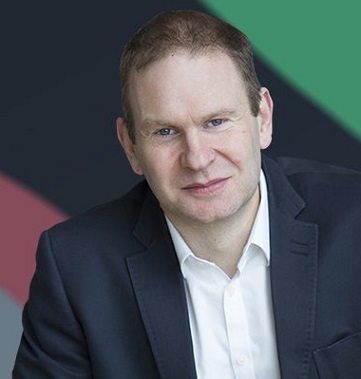Living in a remote British beauty spot can come with a price: poor internet connectivity. Super-fast broadband, defined as 30 Mbps, is now available to 89% of UK homes, but only 59% of rural dwellings can access these speeds. Some don’t have internet at all. As more aspects of our personal and professional lives rely on being connected to the internet, such a stark rural-urban divide seems antiquated and must be tackled if the country is to maintain its standing as a digital global leader.
There is no silver bullet when it comes to the issue of rural connectivity, but one of the solutions is to change the way we use and share spectrum. For the uninitiated, spectrum refers to the radio frequencies we use for sending and receiving radio, TV, data and internet traffic, and an overhaul of the way we manage it could help chip away at the hefty rural-urban digital divide.
Currently, spectrum is sold like slices of cake, with each wedge available exclusively to the telecommunications service provider who pays for it. If we think of spectrum like airspace, and radio/data connections like airlines, this equates to each airline buying its own portion of airspace in which to fly their planes exclusively. If the airline decided not to fly in that airspace on a particular day for commercial reasons, the airspace would go empty, but everyone else would have to fly around the other way.
The issues with this model are obvious – it’s impractical, unsustainable and wasteful. Thankfully for passengers, air traffic control manages airspace dynamically, maximising available airspace to keep as many planes in the air as possible at any one time, safely. It’s time for spectrum management to follow suit, limiting the influence of internet service providers on which areas enjoy connectivity. Dynamic sharing is the equitable and effective way forwards, and it’s an area that has already recorded success in enabling internet connections in a remote Scottish island where residents have long struggled to get online or access the internet at a reasonable speed.
The story starts with TV. When televisions were switched from analogue to digital, the radio frequencies used for transmission were left vacant. With an Ofcom-licensed, TV white space (TVWS) database, these available ‘white spaces’ can be identified in real time and used to enable new data connections. By dynamically identifying and sharing spectrum, we are making use of what is available when its needed, and leaving it for others to use when not.
While TVWS internet connections will never supersede traditional broadband methods, the approach can provide a solution for those who struggle to access internet by any other means due to the challenging location in which they live. Rural communities, especially those surrounded by undulating terrain and at the mercy of inclement weather, often find that broadband providers are resistant to laying cables while any Wi-Fi relying on line of sight can’t cope with the topography.
TVWS connections don’t rely on line of sight and can penetrate obstacles so can provide a connection – or a faster connection – to the people who believed they have no options left available to them without resorting to expensive satellites. This is no longer a hypothesis: the first commercial roll-out of TVWS internet connections took place on the Scottish Isle of Arran in October 2016. The approach was replicated in a pilot scheme in Llanarth, Wales, and is now being used to boost connectivity in one of Scotland’s top tourist spots: Loch Ness.
Some of the communities living around Loch Ness receive virtually no usable broadband at all, denying them access to things many take for granted: social media, emails, online banking and shopping. Digital exclusion isolates older people, frustrates younger people, and complicates life for all in an age many services and opportunities are only available online.
In Loch Ness, where tourism is a major industry, internet connectivity is vital for the small businesses that rely on visitors to make their money. In turn, tourists are increasingly expectant of a good internet connection when they holiday. This new TVWS project will provide a new connectivity solution for residences and business premises alike.
As the internet takes centre stage in many aspects of our lives, digital exclusion is no longer acceptable. The internet can provide a solution to some of the social challenges of our time, but only if everyone has equal access to it, regardless of where they live or the shape the terrain surrounding their house. We know the scale of the problem – 11% of UK households do not have access to the internet – and smarter sharing of spectrum could be part of the solution.
That old adage of ‘a problem shared…’ rings true even in this technologically advanced age. Dynamic spectrum management solutions such as TVWS can help get rural communities connected, but it could also be part of the solution to another looming crisis: the explosion of demand on a finite resource as the Internet of Things rushes closer to reality.
